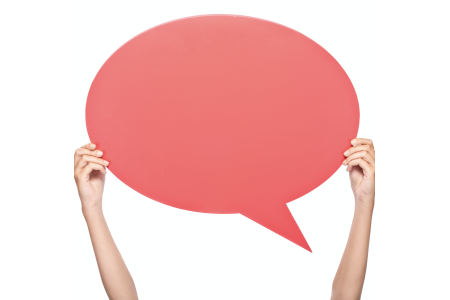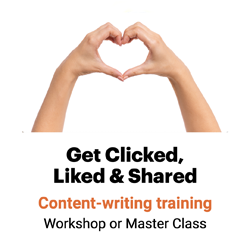How to write about research
It’s not the survey, silly. Most survey stories fail because they focus on the survey, not on the survey results. Here’s how to organize a successful survey story that focuses on the findings, not on the poll:

Lift survey results off the page.
Start with the display copy:
1. Highlight a fascinating finding in the headline. Tell the story, don’t just tell about the story. Your headline should communicate one key survey result, not just announce that you are releasing those results. Here’s an example from a FleishmanHillard release by John Armato for H&R Block:
HOLY 1040! BATMAN PAYS MORE!
2. Summarize the survey in the deck. Now that you’ve gained reader attention with the fascinating findings, it’s time to summarize the story elements in the deck. From the H&R Block survey story:
Survey of kids’ takes on taxes reveals amusing perceptions, noble priorities and a deep love of TV
I love Armato’s twist on a list there. To cover all the story elements, I’d try to squeeze H&R Block into that deck: “H&R Block survey …”
Set up the survey in the intro.
Start strong.
1. Don’t lead with the survey. Communicate one to three key survey results in the lead.
Armato’s compression of details lead squeezes three fascinating findings into one paragraph:
Notice that Armato doesn’t worry about covering the survey itself in the lead. You don’t need to.
2. Summarize the survey in the nut graph. Now that you’ve shown the fascinating findings, it’s time to introduce the survey itself in a sentence or two:
3. Describe the survey methodology in the background section. Paragraph three is soon enough for this information:
Of course, you’ll want to link to more details for the wonks who want it. Make your methodology, survey questions and full results available, just not in the story itself.
List the survey results in the body.
List three to seven key findings in the body of your survey story. Use a hierarchical structure, moving from most important (or most surprising, or valuable or hilarious …) finding to least. But, to avoid ending with a whimper instead of a bang, finish with your second-most-important finding.
- Parents get cranky while figuring taxes. Nearly half of the kids chose “crabby and mad” to describe their parents’ attitude when figuring their taxes. Only 8 percent chose “excited and happy.”
- No on allowance tax to cover education … When asked whether it would be a good idea or a bad idea to require kids to pay taxes on their allowances to help pay for schools, 70 percent thought it would be a bad idea.
- … but yes on taxes to watch TV. Allowances everywhere took a beating, however, when kids were asked “Given a choice, would you rather pay taxes on your allowance or not be allowed to watch TV?” More than half said they’d rather pay the tax.
- Yes on taxes to help the poor. Given the choice of putting tax dollars toward the army, highways, education, helping the poor, national parks or paying off the national debt, helping the poor was by far the most popular choice.
- A “B-” to Uncle Sam for managing tax dollars. They were tough on Uncle Sam, though, with only 16 percent awarding an “A” in response to the question “If you were a teacher, what grade would you give to the United States government for how it manages and spends the tax dollars it receives?” (26 percent B, 21 percent C, 10 percent D, 21 percent F, 5 percent don’t know).
Wind up in the conclusion.
1. Transition to the end in the wrapup. What interesting finding can you use to wind the story down?
2. Circle back to the lead in the kicker. Leave a lasting impression with a concrete, creative, provocative final paragraph.
Survey the scene.
Survey stories are a staple of content marketing writing. Use this structure to make the most of your survey reports.

Leave a Reply